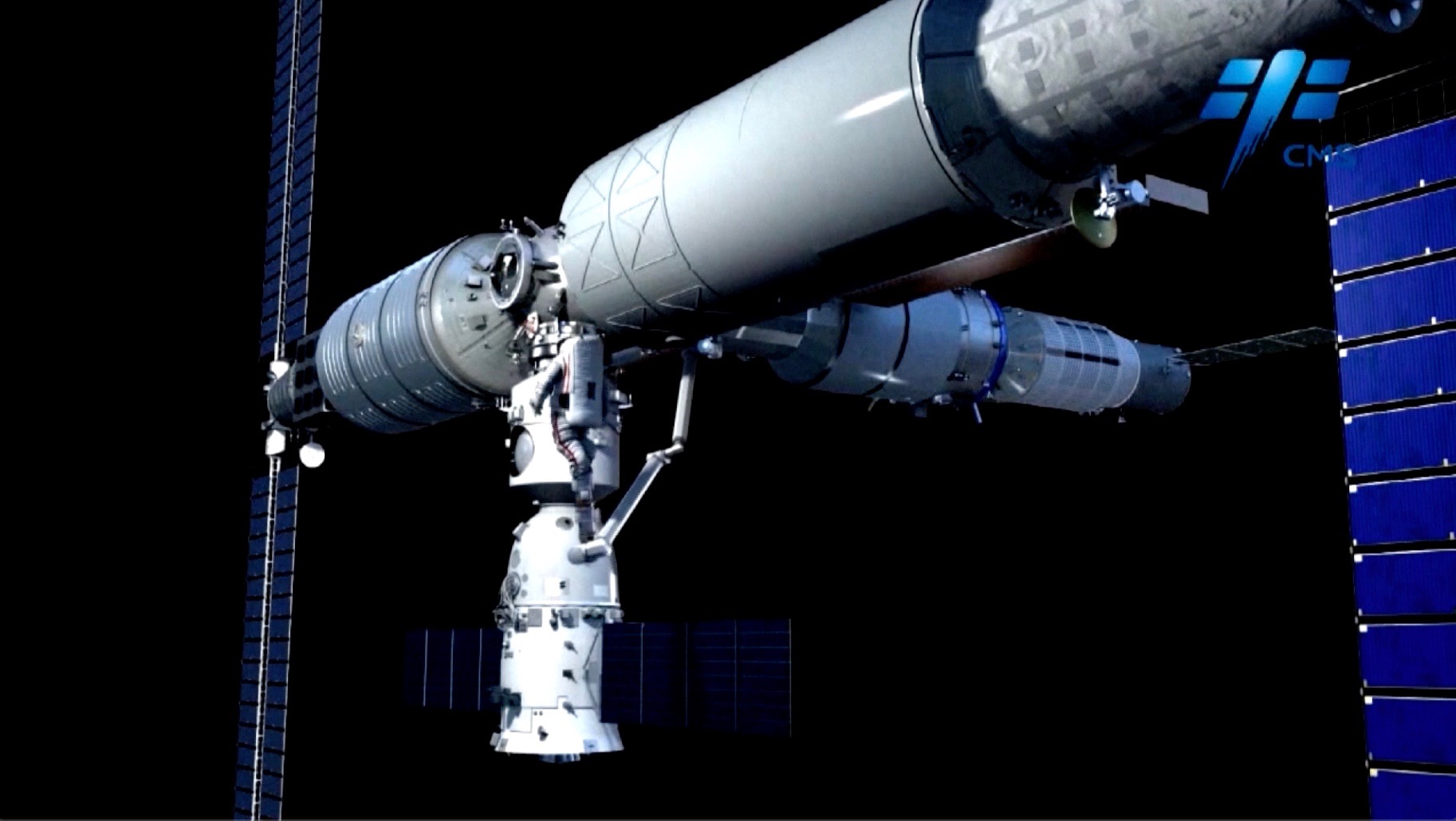
The milestones are coming fast and furious for China's space program.
The robotic Chang'e 5 mission successfully returned pristine moon samples to Earth in mid-December, something that hadn't been done since 1976. China's first fully homegrown Mars mission, Tianwen-1, is scheduled to arrive at the Red Planet on Feb. 10. And shortly after that, the nation plans to begin assembling its space station in Earth orbit.
"The testing is in its final stage. We will start the key technology test and construction of the Chinese space station next spring," Zhou Jianping, chief designer of China's human spaceflight program, said last month, according to the South China Morning Post.
Related: China selects 18 astronauts in preparation for space station launch
The hardware scheduled to take flight in a few months is the station's core module, known as Tianhe ("Joining of the Heavens"), which will provide living space and life support for astronauts and house the outpost's power and propulsion elements.
Tianhe, which is 59 feet (18 meters) long and weighs about 24 tons (22 metric tons), will launch atop a Long March 5B rocket from Wenchang Satellite Launch Center, on the island of Hainan.
Tianhe's launch will be followed in relatively rapid succession by numerous others. A total of 11 liftoffs will be required to build the space station, which China wants to finish by the end of 2022, the South China Morning Post reported.
Get the Space.com Newsletter
Breaking space news, the latest updates on rocket launches, skywatching events and more!
The completed complex is expected to be about 20% as massive as the International Space Station, which is run by a 15-nation partnership that does not include China. If that's the case, China's outpost will be about the same size as Russia's old Mir space station, which was intentionally deorbited in 2001.
China has been gearing up for Tianhe's launch for years. The nation lofted a prototype station module called Tiangong-1 in 2011 and another one, Tiangong-2, in 2016. Chinese astronauts visited both of these space labs aboard the nation's Shenzhou spacecraft. And in 2017, the robotic cargo vessel Tianzhou-1 visited Tiangong-2, demonstrating autonomous docking and refueling operations multiple times during its mission.
Tiangong-2 was deorbited successfully in July 2019. Tiangong-1 also burned up in Earth's atmosphere, but its demise was not quite as clean; it came down in an uncontrolled fashion over the southern Pacific Ocean in April 2018.
Mike Wall is the author of "Out There" (Grand Central Publishing, 2018; illustrated by Karl Tate), a book about the search for alien life. Follow him on Twitter @michaeldwall. Follow us on Twitter @Spacedotcom or Facebook.
Join our Space Forums to keep talking space on the latest missions, night sky and more! And if you have a news tip, correction or comment, let us know at: community@space.com.

Michael Wall is a Senior Space Writer with Space.com and joined the team in 2010. He primarily covers exoplanets, spaceflight and military space, but has been known to dabble in the space art beat. His book about the search for alien life, "Out There," was published on Nov. 13, 2018. Before becoming a science writer, Michael worked as a herpetologist and wildlife biologist. He has a Ph.D. in evolutionary biology from the University of Sydney, Australia, a bachelor's degree from the University of Arizona, and a graduate certificate in science writing from the University of California, Santa Cruz. To find out what his latest project is, you can follow Michael on Twitter.









